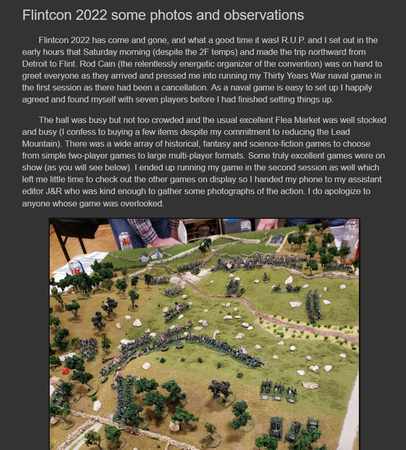The toga is basecoated Red Iron Oxide (Photo 8A) (Toga1), which will be the shadow layer. To establish a medium tone, the next layer (Photo 8B) is Tuscan Red with Poppy Orange (Toga2). A highlight uses the same colors but a different ratio (Toga3), as shown in Photo 8C. After the highlight was on, I still felt things needed a little punching up, so I thinned out some Brown Iron Oxide and used it just underneath and between the pteruges (Photo 8D). (The pteruges are those strips at the shoulders and at the waist - kilt-like - and were attached to a doublet.)

Well, now that we know what they're called, let's paint them! My guiding picture shows the pteruges as white. They are given a base coat of Maple Sugar Tan and White (Pteruges1) (Photo 9A). This is followed by a wash of Renaissance Ink Brown Ink (Pteruges2) (Photo 9B). A thinned-down version of the basecoat (Pteruges3) is then layered to build up the color again (Photo9C). Photo 9D is at the same state as Photo 9C, but fewer layers were used to keep more of the rear of the figure in shadow.

Photo 10 is a series of progressions with different ratios of Maple Sugar Tan and White. Photos 10C and D are, again, at the same level of completion. Thinned pure White was used in C & D to the very highest points (Pteruges4-6). The pteruges are complete.

The chain lorica was an experiment. The results are "okay," and I think the technique will get better with refinement. As I said in The Plan, I thought burnished mail would look odd next to a painted sport helmet. Also, the sculpting of the mail on this figure is a little looser than on the previous figures. Anyway, here is what I tried:
I started with the mandatory basecoat of black (Photo 11A). To this was drybrushed a mix of Vallejo Gunmetal Gray and GW Black Ink (Chain1) (Photo 11B). I then mixed Vallejo Oily Steel and Vallejo Silver (Chain2) and tried to trace a "C" shape onto a portion of each ring (Photo 11C) to enhance the woven chain effect. I also tried to use a short line of thinned Black Ink to cut the top and bottom of the "C" to make the shape more prominent.









